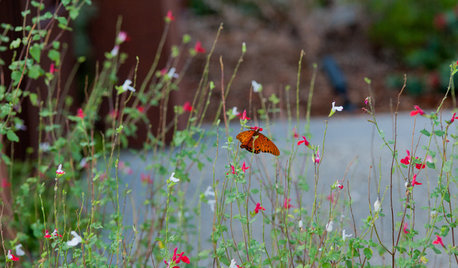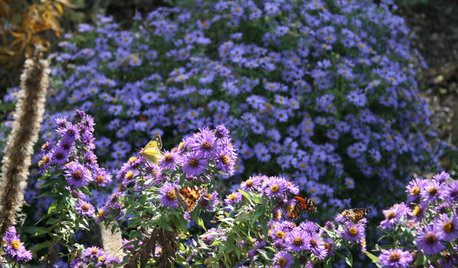butterfly cant fly : (
angie83
17 years ago
Related Stories

GARDENING GUIDES6 Plants That Beat Butterfly Bush for the Wildlife Draw
It's invasive, a nonnative and a poor insect magnet. Check out these better alternatives to butterfly bush in the garden
Full Story
EARTH DAYCreate a Container Wildlife Habitat for Hummingbirds and Butterflies
Don’t let limited space prevent you from welcoming wildlife into your garden
Full Story
GARDENING GUIDES6 Steps to Creating Your Butterfly Garden
Encourage these fanciful winged beauties to visit your garden while helping restore their fragmented habitat
Full Story
FALL GARDENINGWhat Monarch Butterflies Taught Me About Garden Design
Thinking like a butterfly leads to fresh perspectives in the garden and in life
Full Story
FLOWERS AND PLANTSHelp Monarchs and Other Butterflies by Planting Common Milkweed
Summer-blooming Asclepias syriaca is an important larval host plant for the monarch butterfly and attracts a number of pollinating insects
Full Story
FLOWERS15 Native Flowers That Attract Butterflies
By picking plants from this list that are right for your location, you’ll get colorful blooms and support pretty pollinators
Full Story
GARDENING FOR BUTTERFLIESButterfly Gardening: Delight the Eyes With Living Sculptures
Surprise and thrill with a garden that attracts magical winged creatures, bringing color, movement and life
Full Story
FURNITUREModern Icons: The Butterfly Chair
Add Curves and Color Indoors and Out With the 1940s-Style Butterfly Chair
Full Story
KITCHEN DESIGNTrend Alert: Swinging Doors Can't Miss for Convenience
Create accessibility and elegance in one fell swoop with a swinging door modernized for today's homes
Full Story
HOUSEPLANTS8 Houseplants You Can't Kill
They're forgiving and let you forget. Houseplants don't get any easier than this
Full StoryMore Discussions




elaineoz
rhizo_1 (North AL) zone 7
Related Discussions
Flying Insects on Scabiosa Butterfly Blue Plant
Q
A new Butterfly for me, but can't ID it
Q
How cold before butterflies stop flying?
Q
Monarch eclosed - can't fly - struggling on ground
Q
Jillberto
angie83Original Author
susanlynne48
angie83Original Author
susanlynne48
rhizo_1 (North AL) zone 7
susanlynne48
angie83Original Author
tdogmom
emmayct
susanlynne48
sandwhy
susanlynne48
sandwhy
tdogmom
susanlynne48
tdogmom
sandwhy
susanlynne48
naturemama